

![]()
![]()
Invited Short Talks
(Speakers listed below in name alphabet order)
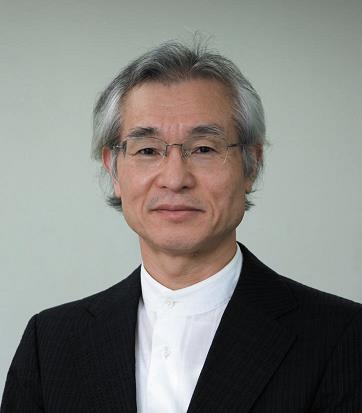
Fumiyuki Adachi
(IEEE/IEICE Fellow)
Distinguished Professor,
Tohoku
University, Japan
Title:
Virtual User-Centric Small Cell and Cooperative Signal Transmission for 5G
Time:
10:00-10:30, Saturday, January 28, 2017
Abstract:
After 35 years from its birth in 1979, wireless mobile communications
networks have evolved into 4G. The mobile data traffic volume in 2020 is
expected to reach about 1000 times of 2010. Therefore, the
spectrum-efficiency is becoming more and more important for 5G. Furthermore,
the energy-efficiency will become an important concern. To improve both the
spectrum-efficiency and energy-efficiency, mobile communications networks
need to be significantly restructured. A promising solution is to introduce
small-cell structured networks in order to exploit more the spatial
distribution of users. In this talk, we will introduce a virtual
user-centric small-cell concept. Then, we will present the recent advances
in distributed antenna cooperative signal transmission techniques: the
space-time block-coded diversity for improving the signal quality for
macro-cell edge users and the spatial multiplexing for improving the sum
capacity of users in a good propagation condition. Since higher frequency
bands will be used in 5G, the transmit signal peak-to-average power ratio (PAPR)
remains as an important concern for power amplifiers of battery operated
user terminals. In this talk, PAPR reduction technique will also be
presented.
Biography:
Fumiyuki Adachi received the B.S. and Dr. Eng. degrees in electrical engineering from Tohoku University, Sendai, Japan, in 1973 and 1984, respectively. In April 1973, he joined the Electrical Communications Laboratories of Nippon Telegraph & Telephone Corporation (now NTT) and conducted various researches on digital cellular mobile communications. From July 1992 to December 1999, he was with NTT Mobile Communications Network, Inc. (now NTT DoCoMo, Inc.), where he led a research group on Wideband CDMA for 3G systems. Since January 2000, he has been with Tohoku University, Sendai, Japan. His research interest is in the area of wireless signal processing (multi-access, equalization, antenna diversity, adaptive transmission, channel coding, etc.) and networking.
He is an IEICE Fellow and an IEEE Fellow. He was a recipient of the IEEE Vehicular Technology Society Avant Garde Award 2000, IEICE Achievement Award 2002, Thomson Scientific Research Front Award 2004, Ericsson Telecommunications Award 2008, Telecom System Technology Award 2009, Prime Minister Invention Award 2010, British Royal Academy of Engineering Distinguished Visiting Fellowship 2011, KDDI Foundation Excellent Research Award 2012, VTS Conference Chair Award 2014, C&C Prize 2014, and Rintaro Shida Award 2016. He is listed in Highly Cited Researchers 2001 (http://hcr.stateofinnovation.thomsonreuters.com/page/archives).

Jean Armstrong
(IEEE Fellow)
Professor,
Monash University, Australia
Title:
OFDM for Optical Communications
Time:
11:30-12:00, Saturday, January 28, 2017
Abstract:
Orthogonal frequency division multiplexing (OFDM) has been extensively used
in radio frequency (RF) wireless communications for many years, but it is
only within the last ten years that OFDM for optical communications has
attracted widespread interest. Since then thousands of papers have been
published describing the use of OFDM in applications including long haul
optical fiber transmission, optical fiber access networks and optical
wireless systems.
This talk outlines the current state of the art of optical OFDM. It describes the different forms of optical OFDM that have been developed for particular applications and discusses the advantages and disadvantages of each. Open problems and future directions will be discussed.
Biography:
Jean Armstrong is a professor at Monash University, Australia, where she leads a research group working on topics including optical wireless, radio frequency and optical fiber communications. She has published numerous papers including over seventy on aspects of OFDM for wireless and optical communications and has six commercialized patents. Her earlier OFDM work was on RF wireless applications, but in 2005 she realised that OFDM could also be applied to optical communications and initiated research in this field.
Jean Armstrong was born in Scotland and received a B.Sc. (First Class Honours) in Electrical Engineering from the University of Edinburgh and M.Sc. in Digital Techniques from Heriot-Watt University. Before moving to Australia she worked as a Design Engineer at Hewlett-Packard Ltd., Scotland. In Australia she has held a range of academic positions at Monash University, the University of Melbourne and La Trobe University.
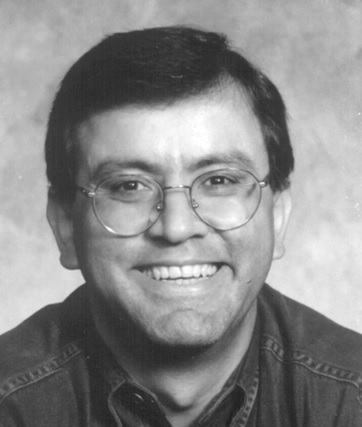
Ender Ayanoglu (IEEE Fellow)
Professor, University of California, Irvine, USA
Title:
Beamformer Design for Massive MIMO Systems in Millimeter-Wave Channels
Time: 14:00-14:30,
Saturday, January 28, 2017
Abstract:
We establish a general framework on the reduced dimensional channel state information (CSI) estimation and pre-beamformer design for frequency-selective massive multiple-input multiple-output (MIMO) systems employing single-carrier (SC) modulation in time division duplex (TDD) mode by exploiting the joint angle-delay domain channel sparsity in millimeter (mm) wave frequencies. First, based on a generic subspace projection taking the joint angle-delay power profile and user-grouping into account, the reduced-rank minimum mean square error (RR-MMSE) instantaneous CSI estimator is derived for spatially correlated wideband MIMO channels. Second, the statistical pre-beamformer design is considered for frequency-selective SC massive MIMO channels. We examine the dimension reduction problem and subspace (beamspace) construction on which the RR-MMSE estimation can be realized as accurately as possible. Finally, a spatio-temporal domain correlator-type reduced-rank channel estimator, as an approximation of the RR-MMSE estimate, is obtained by carrying out least square (LS) estimation in a proper reduced dimensional beamspace. It is observed that the proposed techniques show remarkable robustness to the pilot interference (or contamination) with a significant reduction in pilot overhead.
Biography:
Ender Ayanoglu received the
M.S. and Ph.D. degrees from Stanford University, Stanford, CA in 1982 and
1986, respectively, in electrical engineering. He was with the
Communications
Systems Research Laboratory, part of AT&T Bell Laboratories, Holmdel, NJ
until 1996, and Bell Labs, Lucent Technologies until 1999. From 1999 until
2002, he was a Systems Architect at Cisco Systems, Inc., San Jose, CA. Since
2002, he has been a Professor in the Department of Electrical Engineering
and Computer Science, University of California, Irvine, Irvine, CA, where he
served as the Director of the Center for Pervasive Communications and
Computing and held the Conexant-Broadcom Endowed Chair during 2002- 2010.
His past accomplishments include invention of the 56K modems,
characterization of wavelength conversion gain in Wavelength Division
Multiplexed (WDM) systems, and diversity coding, a technique for link
failure recovery in communication networks employing erasure coding in 1990,
prior to the publication of the first papers on network coding. During
2000-2001, he served as the founding chair of the IEEE-ISTO Broadband
Wireless Internet Forum (BWIF), an industry standards organization which
developed and built a broadband wireless system employing Orthogonal
Frequency Division Multiplexing (OFDM) and a Medium Access Control (MAC)
algorithm that provides Quality-of-Service (QoS) guarantees. This system is
the precursor of today’s Fourth Generation (4G) cellular wireless systems
such as WiMAX, LTE, and LTEAdvanced.
From 1993 until 2014 Dr. Ayanoglu was an Editor, and since January 2014 is a
Senior Editor of the IEEE Transactions on Communications. He served as the
Editor-in-Chief of the IEEE
Transactions on Communications from 2004 to 2008. From 1990 to 2002, he
served on the Executive Committee of the IEEE Communications Society
Communication Theory Committee,
and from 1999 to 2001, was its Chair. Dr. Ayanoglu is the recipient of the
IEEE Communications Society Stephen O. Rice Prize Paper Award in 1995 and
the IEEE Communications Society Best Tutorial Paper Award in 1997. He has
been an IEEE Fellow since 1998.
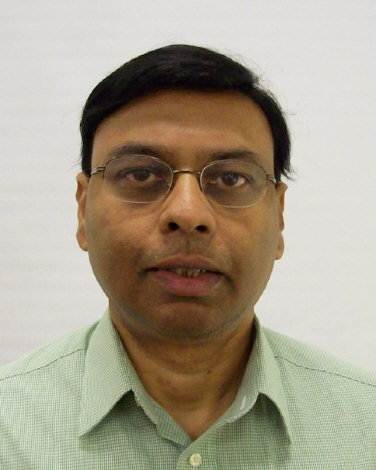
Lead Inventive Scientist, AT&T Research Labs, USA
Title: Software Define Networks to greatly improve the efficiency and flexibility of Packet IP and Optical Networks
Time: 10:00-10:30, Friday, January 27, 2017
Biography:
Gagan L. Choudhury, Ph.D., is a Lead Inventive Scientist at AT&T Labs Research and is an expert on optimization, analysis and Design of Networks and protocols including Software Defined Networks and Mobility networks. He became an IEEE Fellow (2009) for "contributions to design and analysis of telecommunications networks and routing protocols" and an AT&T Fellow (2009) for "outstanding contributions to performance analysis and robust design and their application to improving the performance, reliability and scalability of AT&T’s Networks”.

Sajal K. Das (IEEE Fellow)
Professor,
Missouri
University
of Science and Technology, USA
Title:
Cyber-Physical-Social Convergence in Smart Living: Challenges and
Opportunities
Time:
14:30-15:00, Saturday, January 28, 2017
Abstract:
We live in an era in which our physical and personal environments are
becoming increasingly intertwined and smarter due to the embedding of
pervasive sensing, wireless communications, computing, and actuation
capabilities. The availability of wireless sensor networks (WSNs) and rich
mobile devices (e.g., smartphones) are also empowering humans with
fine-grained information and opinion collection through participatory
sensing about events of interest, resulting in actionable inferences and
decisions. This synergy has led to cyber-physical-social convergence with
human in the loop that exhibits complex interactions, interdependencies and
adaptations between systems and users with a goal to improve quality of life
and experience in what is called smart living. However, the main challenges
are posed by the scale, heterogeneity, and resource limitations (e.g.,
energy) in multi-modal context determination. This invited presentation will
first highlight unique research issues and challenges in smart living and
cyber-physical-social systems. Next it will discuss novel solutions for
energy-efficient data gathering and fusion in WSNs, lifetime optimization in
sensor networks, and energy-aware context recognition with guaranteed
information quality. Case studies and results will be presented for energy
efficient homes and smart healthcare applications. The talk will be
concluded with directions for future research.
Biography:
Dr. Sajal K. Das is the Chair of Computer Science Department and Daniel St. Clair Endowed Chair at the Missouri University of Science and Technology, Rolla. During 2008-2011, he served the US National Science Foundation as a Program Director in the Division of Computer Networks and Systems. Prior to 2013 he was a University Distinguished Scholar Professor of Computer Science and Engineering and founding director of the Center for Research in Wireless Mobility and Networking (CReWMaN) at the University of Texas at Arlington. His current research interests include theory and practice of wireless and sensor networks, mobile and pervasive computing, big data, cyber-physical systems, smart healthcare, distributed and cloud computing, security and privacy, biological and social networks, applied graph theory and game theory. Dr. Das directed numerous funded projects in these areas totaling over $15M and published extensively with more than 600 research articles in high quality journals and refereed conference proceedings. He holds 5 US patents, coauthored 51 book chapters and four books titled Smart Environments: Technology, Protocols, and Applications (2005), Handbook on Securing Cyber-Physical Critical Infrastructure: Foundations and Challenges (2012), Mobile Agents in Distributed Computing and Networking (2012), and Principles of Cyber-Physical Systems (2016). His h-index is 72 with more than 20,500 citations according to Google Scholar. Dr. Das received 10 Best Paper Awards in such prestigious conferences as ACM MobiComí99, IEEE PerComí06 and IEEE SmrtGridCommí12. He is a recipient of numerous awards for research, teaching and mentoring including the IEEE Computer Societyís Technical Achievement Award for pioneering contributions to sensor networks and mobile computing, Lockheed Martin Teaching Excellence Award, and Graduate Deanís Award of Excellence for mentoring doctoral students. Dr. Das serves as the founding Editor-in-Chief of the Pervasive and Mobile Computing journal, and as Associate Editor of IEEE Transactions on Mobile Computing, ACM Transactions on Sensor Networks, and several others. He is a co-founder of the IEEE PerCom, IEEE WoWMoM, and ICDCN conferences, and served on numerous conference committees as General Chair, Program Chair, or Program Committee member. Dr. Das is an IEEE Fellow.

Ahmed E. Kamal (IEEE Fellow)
Professor,
Iowa State
University, USA
Title:
On the Use of Network Coding to Realize Proactive Shared Backup Path
Protection in Optical Networks
Time:
15:00-15:30, Saturday, January 28, 2017
Abstract:
Optical fibers carry
large amounts of bandwidth, which is on the order of multiple Terabits/sec.
The failure of any of these fibers, e.g., due to a cut or due to equipment
failures, can result in disruption of service, which affects large numbers
of network users. Therefore, providing resilience to failures and protection
against the effect of such failures in optical networks is very important in
order to guarantee non-stop service, or service with the least amount of
disruption. To provide this protection against failures, many techniques
have been developed. Shared Backup Path Protection (SBPP) is known to be the
protection strategy that requires the least amount of protection resources.
However, SBPP is a reactive strategy, which requires detecting failures,
signaling and reconfiguring switches. This talk introduces a new definition
of network coding, and shows how this can be applied to implement Shared
Backup Path Protection (SBPP) in a proactive manner. We describe the new
network coding definition, and propose a implementing proactive SBPP, using
this definition, in optical networks and using optical devices. We will
explain the merit of this approach in terms of agility and cost, and compare
it to other well known protection approaches.
Biography:
Ahmed E. Kamal is a professor of Electrical and Computer Engineering at Iowa State University in the USA. He received a B.Sc. (distinction with honors) and an M.Sc. both from Cairo University, Egypt, and an M.A.Sc. and a Ph.D. both from the University of Toronto, Canada, all in Electrical Engineering. He is a Fellow of the IEEE and a senior member of the Association of Computing Machinery. He was an IEEE Communications Society Distinguished Lecturer for 2013 and 2014.
Kamal's research interests include cognitive radio networks, wireless networks, optical networks, cloud computing, and performance evaluation. He received the 1993 IEE Hartree Premium for papers published in Computers and Control in IEE Proceedings, and the best paper award of the IEEE Globecom 2008 Symposium on Ad Hoc and Sensors Networks Symposium.
Kamal chaired or co-chaired Technical Program Committees of several IEEE sponsored conferences including the Optical Networks and Systems Symposia of the IEEE Globecom 2007 and 2010, the Cognitive Radio and Networks Symposia of the IEEE Globecom 2012 and 2014, and the Access Systems and Networks track of the IEEE International Conference on Communications 2016. He is on the editorial boards of the IEEE Communications Surveys and Tutorials, the Computer Networks journal, and the Optical Switching and Networking journal.
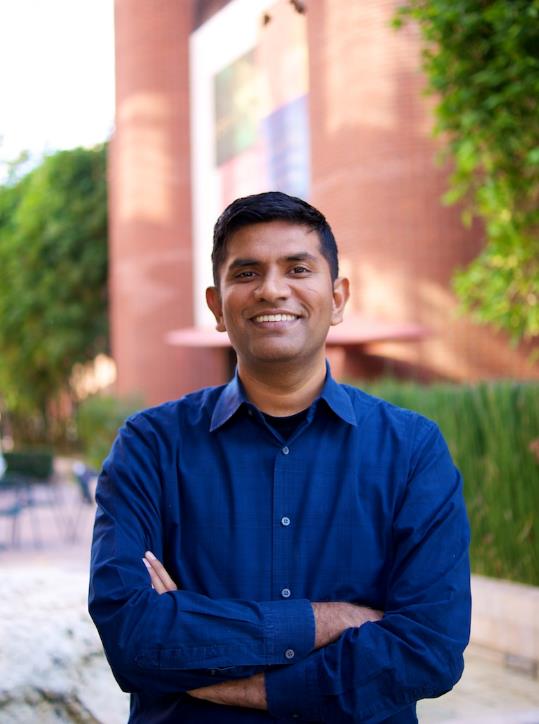
Bhaskar Krisnamachari
Professor,
University of Southern California, USA
Title:
Deep Reinforcement Learning for Dynamic Multichannel Access
Time:
15:00-15:30, Saturday, January 28, 2017
Abstract:
We consider the problem of dynamic multichannel access in a Wireless Sensor
Network (WSN) containing $N$ correlated channels, where the states of these
channels follow a joint Markov model. A user at each time slot selects a
channel to transmit a packet, and receives a reward based on the success or
failure of the transmission, which is dictated by the state of the selected
channel. The objective is to find a policy that maximizes the expected
long-term reward. The problem can be formulated as a partially observable
Markov decision process (POMDP), which is PSPACE-hard and intractable. As a
solution, we apply the concept of online learning and implement a Deep Q
Network (DQN) that can deal with large system space without any prior
knowledge of the system dynamics. We compare the performance of DQN with a
myopic policy and a Whittle Index-based heuristic through simulations and
show that DQN can achieve near-optimal performance. We also evaluate the
performance of DQN on traces obtained from a real indoor WSN deployment. We
show that DQN has the capability to learn a good policy in complex real
scenarios, which do not necessarily show Markovian dynamics.
Biography:
Bhaskar Krishnamachari is Professor and Ming Hsieh Faculty Fellow in Electrical Engineering at the Viterbi School of Engineering, University of Southern California. He has been a faculty member in the Department of Electrical Engineering since 2002. He also holds a joint appointment in the Department of Computer Science. He is the Director of the Autonomous Networks Research Group, and Co-Director of the Ming Hsieh Institute.
His research interests are focused on the design and analysis of algorithms, protocols, and applications for next generation wireless networks. These include low power wireless sensor networks and the Internet of Things, connected vehicles, robotic networks, cognitive radio networks, and green cellular networks. On these topics, his research spans the entire spectrum from theoretical analysis of algorithms to prototype software implementations of network protocols and applications. He has co-authored over 200 technical articles on these topics, including four that have received conference best-paper awards at ACM/IEEE IPSN (2004, 2010), ACM MSWiM (2006) and ACM MobiCom (2010), and one that received best-paper runner-up award at IEEE SECON (2012). Collectively his work has been cited more than 19,000 times.
In 2015, Bhaskar Krishnamachari was listed in Popular Science Magazine's "Brilliant Ten" list; and in 2011, he was included in the TR-35 , Technology Review Magazine's annual listing of the top 35 young innovators under the age of 35. He has received the 2010 ASEE Terman Award, given annually to an electrical engineering educator, and the 2010 IEEE-HKN Outstanding Young Electrical and Computer Engineer Award. He has also received the USC-Mellon Award for Mentoring Graduate Students in 2008, the USC Viterbi School of Engineering Junior Faculty Research Award in 2005, and the National Science Foundation CAREER award in 2004. From 2005-2008, he held the Philip and Cayley MacDonald Early Career Endowed Chair at USC.
He currently serves as an editor for the ACM Transactions on Sensor Networks. He has previously served as an editor for the IEEE Transactions on Wireless Communications, the IEEE Transactions on Mobile Computing. He helped to compile and co-edit a Themed issue of the Philosophical Transactions of The Royal Society A on Sensor Network Algorithms and Applications, which appeared in January 2012 and also an issue on Learning-Based Decision Making in Dynamic Systems Under Uncertainty in the IEEE Journal of Special Topics in Signal Processing in October 2013. He is a founding editor of the IEEE JSAC special series on Green Communications and Networking. He has authored a textbook titled Networking Wireless Sensors, published by Cambridge University Press.
He obtained his B.E. in Electrical Engineering Summa Cum Laude with a four-year full tuition scholarship at The Cooper Union for the Advancement of Science and Art, in New York City in 1998. He then pursued his graduate studies at Cornell University, where he was awarded a three-year graduate fellowship and named one of the eight 1998 Olin Presidential Fellows. There he completed his M.S. in Electrical Engineering in 1999, and his Ph.D. in Electrical Engineering in May 2002. He is a member of the IEEE and ACM and the honor societies Tau Beta Pi and Eta Kappa Nu.

Chien-Ping Lu
Vice President, NovuMind, USA
Title: AI, Native Supercomputing and the Revival of Moore's Law
Time:
11:00-11:30, Friday, January 27, 2017
Abstract:
Moore’s Law needs a new computing paradigm to motivate and revive the
historic exponential performance scaling while AI as a new computing
paradigm requires exponentially more capable hardware from Moore’s Law to
prevail. For Moore’s Law, the exponential performance scaling with clock
speed ended in 2005, and the one with core count, or parallelism, has not
happened. We cannot fit exponentially more cores on a chip due to the
lagging progress in power efficiency per core and the growing gap between
logic and DRAM. Under the von Neumann architecture, the current dominant
computing paradigm, a computing core has to carry architecture legacy for
software compatibility, and use big on-chip memory to overcome the
logic-DRAM gap. It cannot be aggressively specialized to improve power
efficiency. In addition, performance scaling with parallelism works only for
workloads scalable in problem size, which is not necessarily true for
computing problems in general. AI is decoupled from von Neumann architecture
thru Deep Learning. It consolidates computing problems into scalable number
crunching dominated by math primitives, the language of Supercomputing.
Bigger training data generally lead to bigger networks and better user
experience, which, in turn, motivate further investment in Moore’s Law for
more cores on a chip. AI allows the cores to be specialized to handle math
primitives natively and fed with interconnect optimized for native data
movement patterns. Such hardware optimizations can be isolated from software
thru math library interface. Programmers do not need to worry about
parallelism, and they should expect better performance or solve bigger
problems on hardware with more cores.
Biography:
Dr. Lu is currently the VP Hardware Engineering at NovuMind Inc. He is responsible for the R&D of hardware acceleration of Deep Neural Networks. Prior to NovuMind, Dr. Lu was a senior director of advanced graphics development at Intel. From 2011 to 2015, Dr. Lu was a senior director at MediaTek, where he successfully led the in-house GPU project from ground up, and co-founded HSA (Heterogeneous System Architecture) Foundation with AMD, ARM, Imagination, TI, Qualcomm and Samsung to push Heterogeneous Computing in 2012. From 2002 to 2011, Dr. Lu was GPU Architect and Senior Architecture Manager at NVIDA. Dr. Lu participated and delivered several important GPU products.
Dr. Lu got his PhD in Computer Science from Yale University in 1995. He was one of the early researchers in Neural Networks in 90s. His Orthogonal Iteration algorithm for pose estimation has been widely adopted, cited and improved upon in Vision, Robotics and Augmented Reality communities.
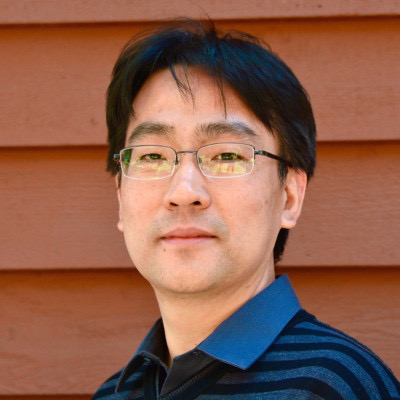
Xiaoxu Ma
Founder and CEO, Yttro Mobile, USA
Title: Data Scarcity of Artificial Intelligence
Time:
11:30-12:00, Friday, January 27, 2017
Abstract:
Data scarcity has been at the core of machine learning for decades. The need
of balance between available data and tractable models spurs the creative
progresses in machine learning and artificial intelligence. With the
groundbreaking deep learning paradigm, artificial intelligence is
reinvigorating with paramount attention and on the cusp of incredible
breakthroughs in theory, practice and applications. We’ll revisit the topic
of data scarcity in the backdrop of the big data and deep learning era, look
at some of the recent developments in this sector, and study how data
scarcity consciousness benefits the practice of artificial intelligence.
Biography:
Xiaoxu Ma received his B.S. and M.S. from Tsinghua University, China and Ph.D. at the Computer Science and Artificial Intelligence Lab (CSAIL) from Massachusetts Institute of Technology. He has 15 years of experience in machine learning, artificial intelligence and computer vision research (at Microsoft Research Asia and Massachusetts Institute of Technology), large-scale engineering and development (at Google, Mountain View), and entrepreneurship and leadership (co-Founder, Chief Scientist and Board Member of Netvirta Inc., and Founder and CEO of Yttro Mobile Inc.)
His research interests focus on computer vision, image processing, machine learning and artificial intelligence, especially in areas of object recognition, scene understanding, 3D modeling, cognitive science and deep learning. His experience also spans over large-scale search and mining, natural language processing, and data visualization. He is the co-author of “Unsupervised activity perception in crowded and complicated scenes using hierarchical bayesian models”, first principled probabilistic framework for scene modeling, and the author and inventor of many other papers and patents.

Shiwen Mao (IEEE Distinguished Lecturer)
Samuel Ginn Endowed Professor, Auburn University, USA
Title:
Fingerprinting based Indoor Localization Revisited: When Deep Learning Meets
CSI
Time:
11:00-11:30, Saturday, January 28, 2017
Abstract:
With the fast growing demand of location-based services in indoor
environments, indoor positioning based on fingerprinting has attracted a lot
of interest due to its high accuracy. In this talk, we present our recent
work on using deep learning for fingerprinting based localization where
Channel State Information (CSI), such as amplitude and phase information,
are exploited for location estimation. Experimental results are presented to
confirm that with deep learning and CSI, the proposed system can effectively
reduce location error compared with existing methods in representative
indoor environments.
Biography:
Shiwen Mao received his Ph.D. in electrical and computer engineering from Polytechnic University (now Tandon School of Engineering, New York University), Brooklyn, NY in 2004. Currently, he is the Samuel Ginn Endowed Professor and Director of Wireless Engineering Research and Education Center (WEREC) at Auburn University, Auburn, AL. His research interests include wireless networks and multimedia communications. He is on the Editorial Board of IEEE Transactions on Multimedia, IEEE Internet of Things Journal, IEEE Multimedia, among others. He is the Chair of IEEE ComSoc Multimedia Communications Technical Committee, and a Distinguished Lecturer of IEEE Vehicular Technology Society.
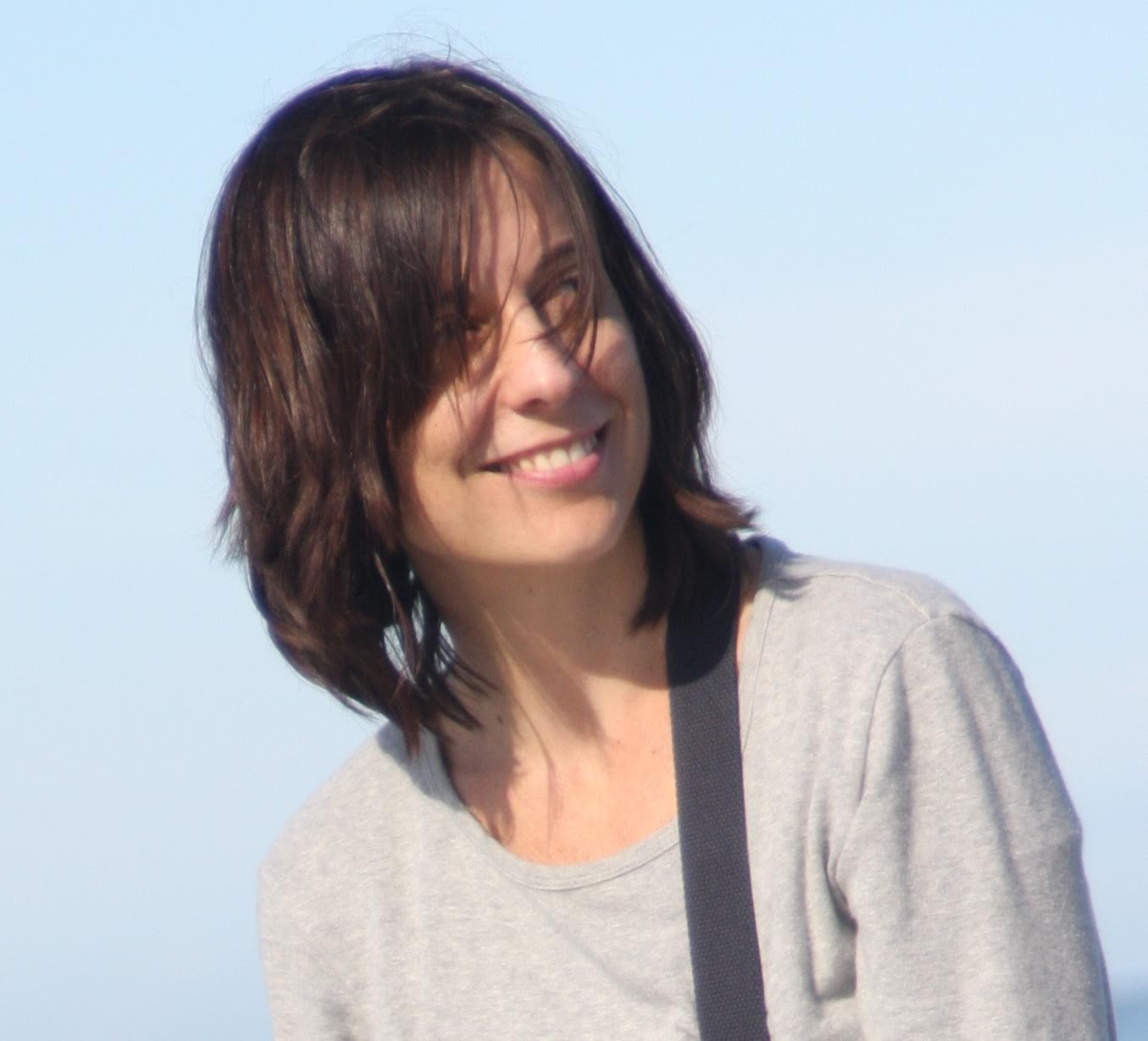
Ivana Maric
Sr. Researcher, Ericsson, USA
Title:
Mesh Networking in 5G
Time:
14:00-14:30, Saturday, January 28, 2017
Abstract:
The benefits of relaying are well understood in network information theory.
In 5G systems, relaying techniques can make a practical impact by enabling
wireless backhaul at high frequencies, massive machine-type-communications
and device-to-device communications. In relay networks, noisy network coding
(NNC) achieves the best known performance and achieves a constant gap from
the network capacity. However, this gap may not be negligible in 5G multihop
applications. Furthermore, the implementation of NNC is challenging. I will
present a NNC scheme that overcomes these problems. The proposed scheme
outperforms the existing state-of-the art relaying schemes with lower
complexity and lower delay, and can thereby lead to practical solutions for
5G mesh networking. (Based on joint work with Song-Nam Hong, Dennis Hui and
Giuseppe Caire.)
Biography:
Ivana Maric received her B.S. degree from the University of Novi Sad, Serbia. She received her M.S and Ph.D. at the Wireless Network Information Laboratory (WINLAB), from Rutgers University in 2000 and 2006, respectively. From 2006 to 2010 she was a postdoctoral scholar at Stanford University. During 2010-2013, she was with Aviat Networks, Santa Clara, CA. Since 2013, she has been a Senior Researcher at Ericsson Research, Santa Clara, CA. During Spring of 2016, she has been an Adjunct Faculty at Santa Clara University.
Focus of her research has been on network information theory and wireless communications. Together with Gerhard Kramer and Roy D. Yates, she is a co-author of the monograph "Cooperative Communications" published by NOW Publishers in 2006. From 2009 to 2012 she served as an Associate Editor for the IEEE Communications Letters. In 2013, together with Andrea Goldsmith, Syed Ali Jafar and Sudhir Srinavasa, she was awarded the 2013 IEEE Communications Society Best Tutorial Paper Award for the paper "Breaking the Spectrum Gridlock with Cognitive Radios: An Information Theoretic Perspective". She currently serves as a Workshops Co-Chair for the IEEE Wireless Communications and Networking Conference (WCNC 2017).
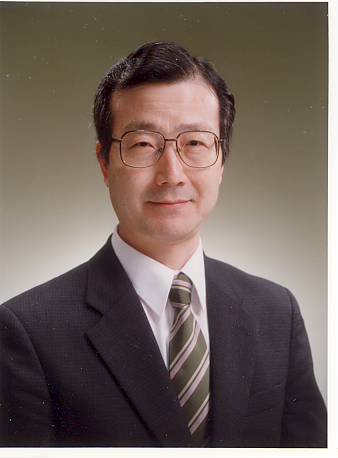
Kenichi Mase
(IEEE/IEICE Fellow)
Professor Emeritus, Niigata University, Japan
Title:
Unmanned Aerial Vehicle Networking for Wide-Area Deployment
Time:
14:30-15:00, Saturday, January 28, 2017
Abstract:
Cooperation and collaboration of multiple unmanned aerial vehicles (UAVs)
are useful and promising in various applications, especially when their
missions are operated in wide areas. Focusing on disaster-affected area
surveillance and distribution service, system architectures and service
scenarios of UAV networking are examined, allowing wide area deployment. In
the former, a wide disaster area is divided into a number of subareas, and
one UAV is assigned in each subarea for performing surveillance from the
air. Electric vehicles (EVs) are used to support transport, automatic
piloting, and energy supply for UAVs. The surveillance data obtained by each
UAV is delivered to a data collection point in the area via wireless
multihop communication through EVs and UAVs. In the latter, a number of
package destinations are distributed in a wide area. Each UAV is in charge
of delivering packages for a given set of destinations. In principle a UAV
perform delivery only to one destination at a time, taking the most
efficient route. Power-supply stations may be deployed along the routes for
extending the cruising range of UAVs. Uniform distribution job assignment
among multiple UAVs is considered on the basis of square-area modeling.
Discussions are made on the benefits of mobile ad hoc networking among UAVs
in these applications and services.
Biography:
Kenichi Mase received the B. E., M. E., and Dr. Eng. Degrees in Electrical Engineering from Waseda University, Tokyo, Japan, in 1970, 1972, and 1983, respectively. He joined Musashino Electrical Communication Laboratories of NTT Public Corporation in 1972. He was Executive Manager, Communications Quality Laboratory, NTT Telecommunications Networks Laboratories from 1994 to 1996 and Communications Assessment Laboratory, NTT Multimedia Networks Laboratories from 1996 to 1998. He was Professor, Faculty of Engineering, Niigata University and Graduate School of Science and Technology, Niigata University from 1999 to 2013. He is now Professor Emeritus, Niigata University. He received IEICE Best Paper Award in 1994, Best Letter Award in 2014, Achievement Award in 2014, Distinguished Achievement and Contributions Award in 2016, the Telecommunications Advanced Foundation Award in 1998, IEEE CQR Chairman's Award in 2010, and Best Paper Award, International Academy, Research, and Industry Association in 2013. His research interests include communications network design and traffic control, quality of service, mobile ad hoc networks and wireless mesh networks. He is an IEEE and IEICE Fellow.
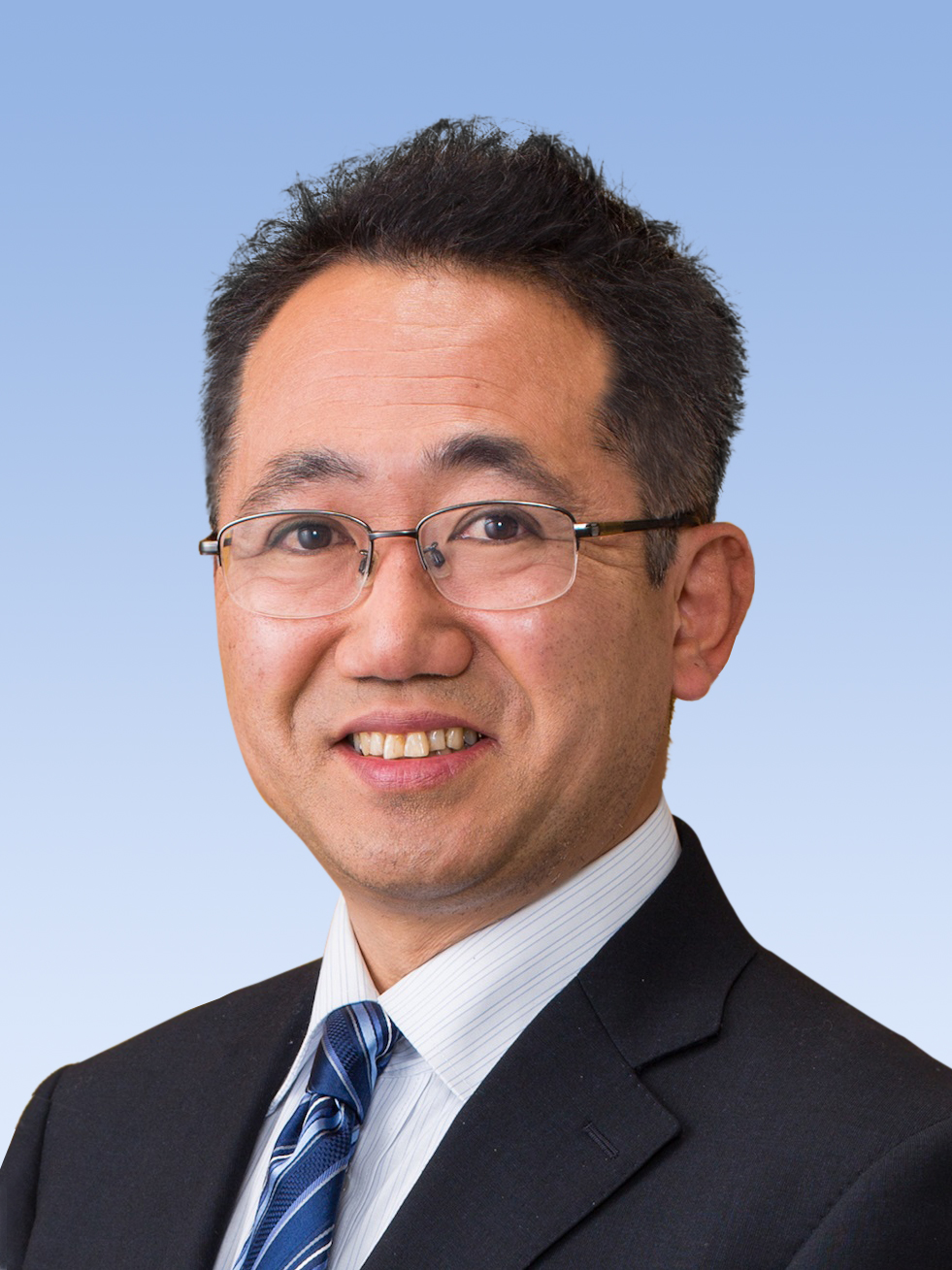
Eiji Oki
(IEEE/IEICE Fellow)
Professor,
The University of Electro-Communications, Japan
Title:
Design and Control in Elastic Optical Networks
Time:
16:00-16:30, Saturday, January 28, 2017
Abstract:
Internet traffic volume is outpacing the technology advancements in
networking. The traffic behavior is changing rapidly and the increasing
mobility of traffic sources makes inefficient and inadequate scaling
performance for conventional optical networks. To overcome the problems of
conventional optical networks and fulfill the needs of the future high-speed
network, optical transmission and networking technologies are moving toward
to the goals of greater efficiency, flexibility, and scalability. Recently,
elastic optical networks, which adopt flexgrid technology, have been shown
to be a promising candidate for future high-speed communications. This talk
describes research trends and future directions on design and control in
elastic optical networks.
Biography:
Eiji Oki is a Professor at the University of Electro-Communications, Tokyo, Japan. He received the B.E. and M.E. degrees in instrumentation engineering and a Ph.D. degree in electrical engineering from Keio University, Yokohama, Japan, in 1991, 1993, and 1999, respectively. In 1993, he joined Nippon Telegraph and Telephone Corporation (NTT) Communication Switching Laboratories, Tokyo, Japan. He has been researching network design and control, traffic-control methods, and high-speed switching systems. From 2000 to 2001, he was a Visiting Scholar at the Polytechnic Institute of New York University, Brooklyn, New York, where he was involved in designing terabit switch/router systems. He was engaged in researching and developing high-speed optical IP backbone networks with NTT Laboratories. He joined the University of Electro-Communications, Tokyo, Japan, in July 2008. He has been active in the standardization of the path computation element (PCE) and GMPLS in the IETF. He wrote more than ten IETF RFCs. Prof. Oki was the recipient of several prestigious awards, including the 1998 Switching System Research Award and the 1999 Excellent Paper Award presented by IEICE, the 2001 Asia-Pacific Outstanding Young Researcher Award presented by IEEE Communications Society for his contributions to broadband network, ATM, and optical IP technologies, the 2010 Telecom System Technology Prize by the Telecommunications Advanced Foundation, IEEE HPSR 2012 Outstanding Paper Award, IEEE HPSR 2014 Best Paper Award Finalist, First Runner Up, and the 2015 IEICE Achievement Award. He has authored/co-authored four books, Broadband Packet Switching Technologies, published by John Wiley, New York, in 2001, GMPLS Technologies, published by CRC Press, Boca Raton, FL, in 2005, Advanced Internet Protocols, Services, and Applications, published by Wiley, New York, in 2012, and Linear Programming and Algorithms for Communication Networks, CRC Press, Boca Raton, FL, in 2012. He is a Fellow of IEEE and IEICE.
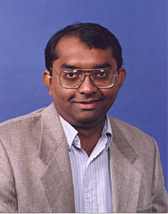
Sumit Roy (IEEE Fellow)
Distinguished Professor,
University
of Washington, USA
Title:
Cross-layer Design of Wireless Networks and Emerging Wireless Standards
Time:
10:30-11:00, Saturday, January 28, 2017
Biography:
Sumit Roy received the B. Tech. degree from the Indian Institute of Technology (Kanpur) in 1983, and the M. S. and Ph. D. degrees from the University of California (Santa Barbara), all in Electrical Engineering in 1985 and 1988 respectively, as well as an M. A. in Statistics and Applied Probability in 1988. His previous academic appointments were at the Moore School of Electrical Engineering, University of Pennsylvania, and at the University of Texas, San Antonio. He has been at UW since 1998, where he is presently Professor of Electrical Engineering. His research interests include analysis/design of wide range of next generation wireless communication systems/networks, inclusive of PAN/LAN/MAN, sensor, vehicular and RFID networks. He has served as Associate Editor for IEEE Trans. Commn. and Wireless Communications, undertaken lead roles in conference organization (Vice TPC Chair for WCNC2005) and was selected Fellow, IEEE for his contributions to cross-layer design of wireless networks and emerging wireless standards.
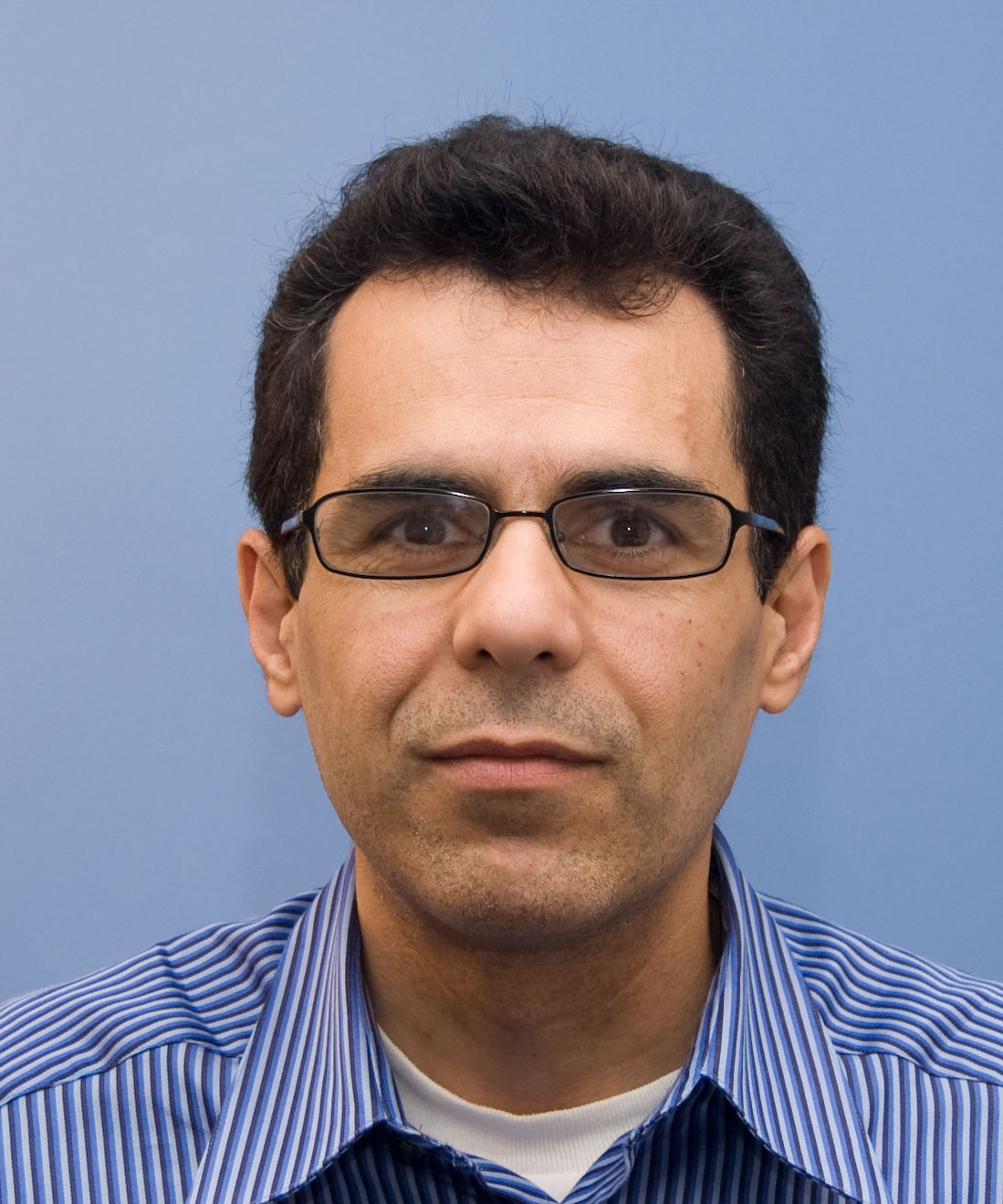
Hamid R. Sadjadpour
Professor,
University
of California, USA
Title:
Coded Content Caching: A New Paradigm for Wireless Cellular Networks
Time:
13:30-14:00, Saturday, January 28, 2017
Abstract:
Recent advances in storage technology have made it possible for many consumer and user products with Terabyte of storage capability. Many researchers are investigating the possibility of taking advantage of this under-utilized storage capability to cache popular contents in order to improve the content delivery in wireless cellular networks. The main idea behind caching is to replicate a content inside the network and as much as possible close to the end users and all the research results are based on storing uncoded contents either entirely or partially during cache placement phase. The information theoretic study of caching focuses on broadcast channel.
In this talk, we introduce a radically different cache placement approach. We propose to cache decentralized coded content caching with a focus on wireless Device-to-Device (D2D) communications. Comparison with uncoded content caching demonstrates significant capacity gains. The extension of the work to wireless ad hoc networks, its impact on routing protocols and security aspects will be discussed.
Biography:
Hamid Sadjadpour received his B.S. and M.S. degrees from Sharif University of Technology and Ph.D. degree from University of Southern California. From December 1995 until July 2001, he was with AT&T research Lab as a member of technical staff and finally Principal member of technical staff. In fall 2001, he joined University of California, Santa Cruz (UCSC) where he is now a Professor. Dr. Sadjadpour has served as technical program committee member and chair of numerous conferences. He has more than 170 publications and awarded 17 patents. His research interests are in the general area of wireless communications and networks. He is the co-recipient of best paper awards at 2007 International Symposium on Performance Evaluation of Computer and Telecommunication Systems (SPECTS), 2008 Military Communications (MILCOM) conference, and 2010 European Wireless Conference.
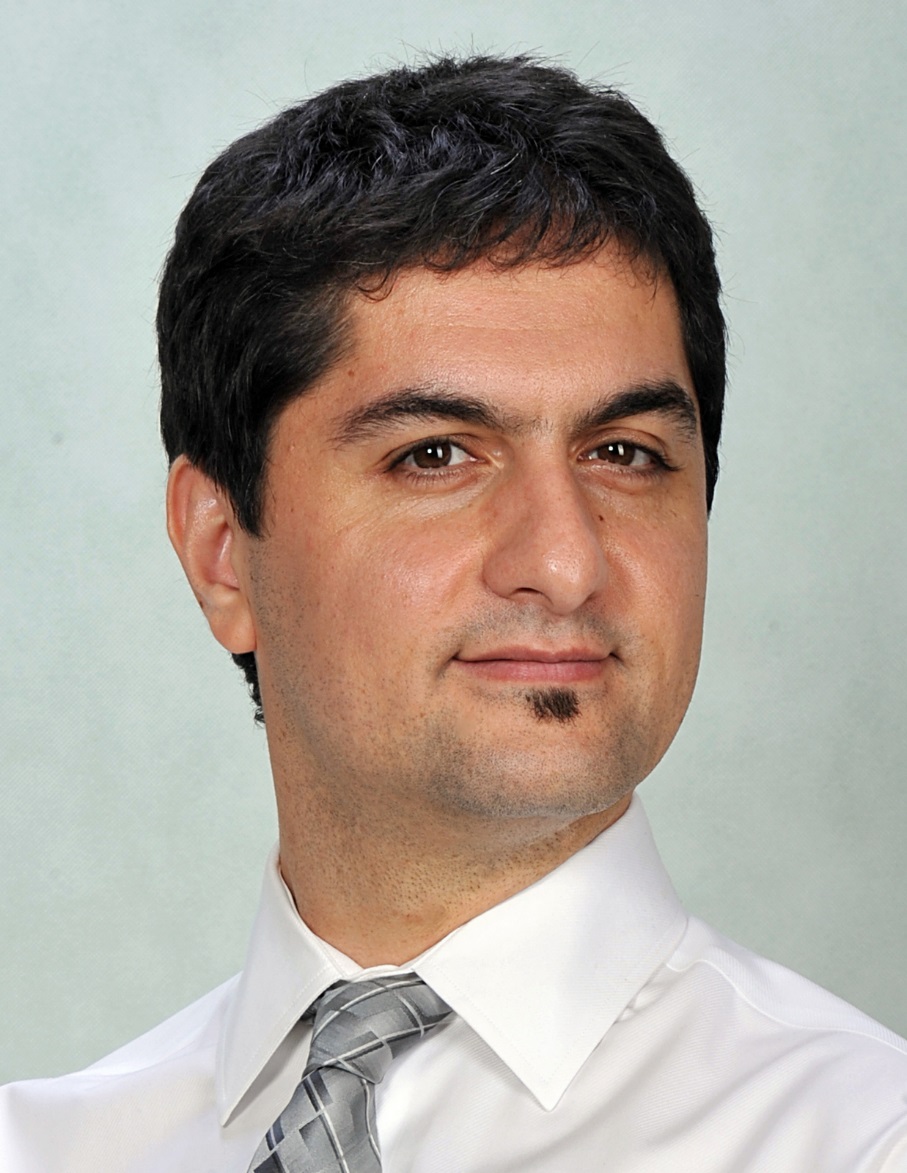
Shervin Shirmohammadi
(IEEE Fellow)
Professor,
University
of Ottawa, Canada
Title:
Using SDN to Deliver Quality of Experience for Multimedia Services
Time:
17:30-18:00, Saturday, January 28, 2017
Abstract:
Multimedia services such as video streaming, gaming, and tele-conferencing
now constitute more than 70% of Internet traffic. While these services have
strict quality requirements, service providers have been unable to meet
them, due to the best-effort nature of the Internet, which gives service
providers very little control on how to handle flows for multimedia streams.
Software Defined Networking (SDN) has the potential to give greater control
to providers, enabling them to offer better quality services. In this talk,
we will first present the different classes of multimedia services and the
quality of experience that their users expect. We will then describe how SDN
can help providers to support the different classes of these services more
efficiently, leading to higher quality of experience for the consumers. We
will also study a few specific cases of SDN-enabled multimedia services for
video-on-demand, and cloud gaming.
Biography:
Shervin Shirmohammadi, FIEEE, received his Ph.D. in Electrical and Computer Engineering in 2000 from the University of Ottawa, Canada, where he is currently a Professor with the School of Electrical Engineering and Computer Science. He is the Director of the Distributed and Collaborative Virtual Environment Research Laboratory, doing research in multimedia systems and networks, specifically video systems, gaming systems, and multimedia-assisted healthcare systems. The results of his research, funded by more than $13 million from public and private sectors, have led to over 300 publications, more than 65 researchers trained at the postdoctoral, PhD, and Master’s levels, over 20 patents and technology transfers to the private sector, and a number of awards. He is the Editor-in-Chief of IEEE Transactions on Instrumentation and Measurement, Senior Associate Editor of ACM Transactions on Multimedia Computing, Communications, and Applications, an Associate Editor of IEEE Transactions on Circuits and Systems for Video Technology, and was an Associate Editor of Springer’s Journal of Multimedia Tools and Applications from 2004 to 2012. Dr. Shirmohammadi is an IEEE Fellow for contributions to Multimedia Systems and Network Measurements, a University of Ottawa Gold Medalist, a licensed Professional Engineer in Ontario, and a Lifetime Professional Member of the ACM.

Jane M. Simmons (IEEE Fellow)
Founder, Monarch Network Architects, USA
Title:
Technology and Architectural Approaches to Address Continued Explosive
Growth in Network Traffic
Time:
13:30-14:00, Saturday, January 28, 2017
Abstract:
Continued explosive network traffic growth dictates that network capacity
grow accordingly. Moreover, it is highly desirable that the increase in
network capacity be accompanied by a decrease in cost and power consumption
per unit of bandwidth. Simply lighting up additional network fiber will not
meet this goal, thus motivating research into more efficient solutions. We
discuss technologies that potentially deliver the required growth in
capacity along with the desired cost and power economies-of-scale. While
these approaches hold promise, they present various challenges and
drawbacks, including adding complexity to network design, and are not likely
to be deployed in the very near future. An alternative, though much more
limited, means of handling greater traffic demand is through more efficient
use of existing capacity. We enumerate a variety of architectural approaches
that fall under this umbrella. While not providing benefits commensurate to
those of the technological approaches, they represent feasible near-term
solutions. Ultimately, a combination of methodologies is likely to be
deployed, such that capacity can continue to gracefully scale as needed.
Biography:
Jane M. Simmons has been involved in the research and development of optical networks for 20 years. She currently is the founder of Monarch Network Architects, which provides optical network architectural services and design tools. She served as the subject matter expert on optical networking for DARPA for six years, and made significant technical contributions to DARPA’s CORONET program on dynamic, highly-reliable networks. From 1999 to 2002, she was the Executive Engineer of Network Architecture and later the Chief Network Architect of Corvis Corp. While at Corvis, she performed the network design and the link engineering for the first commercially deployed all-optical backbone network. Through pioneering algorithmic and architectural optimizations, she played a significant role in the adoption of all-optical networking in telecommunications networks. Prior to Corvis, Dr. Simmons worked at Bell Labs/AT&T Labs Research, where she conducted research on backbone, regional, and broadband access networks. She received a B.S., Summa Cum Laude, from Princeton University, and S.M. and Ph.D. degrees from MIT, all in Electrical Engineering. Dr. Simmons is a Fellow of the IEEE and is a member of Phi Beta Kappa, Tau Beta Pi, and Sigma Xi honor societies. She teaches a course on optical network design at OFC, and is the author of the textbook Optical Network Design and Planning, now in its second edition.
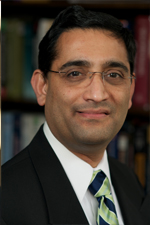
Suresh Subramaniam
(IEEE Fellow)
Professor,
George Washington University, USA
Title:
Tentative Title: Recent advances in optical data center networking
Time:
16:30-17:00, Saturday, January 28, 2017
Abstract:
This talk will present an overview of some recent trends in incorporating
optical technology in data center network architectures. Several recent
proposals for DCN architectures will be presented, and possible future
topics will be presented.
Biography:
Suresh Subramaniam received the Ph.D. degree in electrical engineering from the University of Washington, Seattle, in 1997. He is a Professor and Department Chair of Electrical and Computer Engineering at the George Washington University, Washington DC. His research interests are in the architectural, algorithmic, and performance aspects of communication networks, with current emphasis on optical networks, cloud computing, and data center networks. He has published over 160 peer-reviewed papers in these areas. Dr. Subramaniam is a co-editor of three books on optical networking. He has served as TPC Co-Chair for Globecom 2016 ONS, LANMAN 2014, INFOCOM 2013, ANTS 2008, ICC 2007 ONS, and Globecom 2006 ONS. He is or has been on the editorial boards of the IEEE/ACM Transactions on Networking, IEEE/OSA Journal of Optical Communications and Networking, Elsevier Optical Switching and Networking, Springer Photonic Network Communications, and KICS Journal of Communications and Networks. During 2012 and 2013, he served as the elected Chair of the IEEE Communication Society Optical Networking Technical Committee. He is a co-recipient of Best Paper Awards at ICC 2006 ONS and at the 1997 SPIE Conference on All-Optical Communication Systems. He is a Fellow of the IEEE.

Haohong Wang
General Manager, TCL Research America, USA
Title: Future Mobile World without Apps
Time:
10:30-11:00, Friday, January 27, 2017
Abstract:
This talk will present a vision of the future where apps are no longer the
dominant customer interaction in the mobile world. The alternative that we
propose would "orchestrate" the mobile experience by using a "moment-first"
model that would leverage machine learning and data mining to bridge a
user's needs across app boundaries, matching context and knowledge of the
user with ideal services and interaction models between the user and device.
In this way, apps would be employed at a function level, while the overall
user experience would be optimized by liberating user data outside of the
app container and intelligently orchestrating the user experience to fulfill
the needs of the moment.
Biography:
As the General Manager of TCL Research America, Dr. Haohong Wang oversees the R&D activities in North America for TCL, a global leader in consumer electronics with over 75,000 employees worldwide and ranks the 3rd in TV and the 5th in mobile phone business. Dr. Wang is a recognized leader in multimedia and communication societies, a recipient of the IEEE MMTC Distinguished Service Award and the APSIPA Industrial Distinguished Leader Award, a co-author of five books, and an inventor of over 70 US patents and pending applications. Before joining TCL, he held technical and management positions at AT&T, Catapult, Qualcomm, Marvell, and Cisco.
Dr. Wang’s current research areas include multimedia computing and mobile systems and services. He is the Steering Committee Chair of IEEE ICME. He chaired the IEEE Multimedia Communications Technical Committee, and the IEEE Technical Committee on Human Perception and Multimedia Computing. He has been the Editor-in-Chief of the Journal of Communications, and Vice President of Asia-Pacific Signal and Information Processing Association. He also chaired the IEEE GLOBECOM 2010, IEEE ICME 2011, IEEE VCIP 2014, IEEE ISM 2015 and ACM Multimedia 2017. He received his Ph.D. from Northwestern University, Evanston, USA
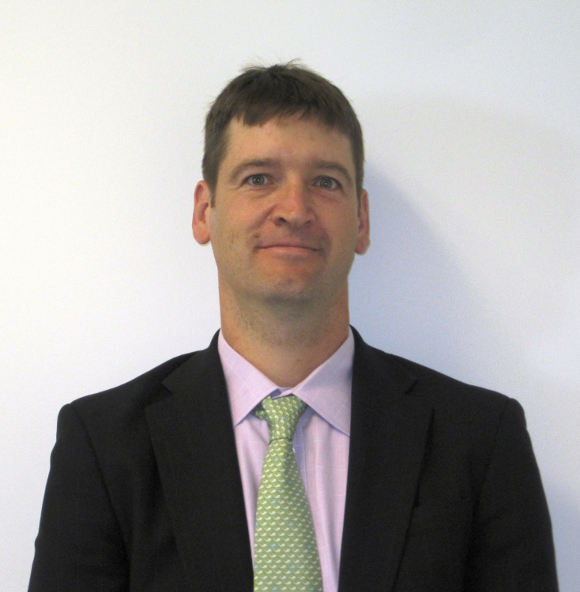
Cedric Westphal
Principal Research Architect,
Huawei, USA
Title:
Challenges in Networking to Support Augmented Reality and Virtual Reality
Time:
17:00-17:30, Saturday, January 28, 2017
Abstract:
We consider the network implications of virtual reality (VR) and augmented
reality (AR). While there are intrinsic challenges for AR/VR applications to
deliver on their promise, their impact on the underlying infrastructure will
be undeniable. We look at augmented and virtual reality and consider a few
use cases where they could be deployed. These use cases define a set of
requirements for the underlying network. We take a brief look at potential
network architectures. We then make the case for Information-centric
networks as a potential architecture to assist the deployment of AR/VR and
draw a list of challenges and future research directions for next generation
networks to better support AR/VR.
Biography:
Cedric Westphal is a Principal Research Architect with Huawei Innovations working on future network architectures, both for wired and wireless networks. His current focus is on Information Centric Networks. He also has been an adjunct assistant professor with the University of California, Santa Cruz since 2009. Prior to Huawei, he was with DOCOMO Innovations from 20072011 in the Networking Architecture Group. His work at DOCOMO has covered several topics, all related to next generation network architectures: scalable routing, network virtualization and reliability, using social networks for traffic offloading, etc. Prior to that, he was at Nokia Research Center (now Nokia Bell Labs) from 2000 to 2006. He received a MSEE in 1995 from Ecole Centrale Paris, and a MS (1995) and Ph.D. (2000) in EE from the University of California, Los Angeles. Cedric Westphal has coauthored over eighty journal and conference papers, including several best paper awards; and been awarded over thirty patents. He was an area editor for the ACM/IEEE Transactions on Networking, an assistant editor for (Elsevier) Computer Networks journal, and a guest editor for Ad Hoc Networks journal and ACM/IEEE JSAC. He has served as a reviewer for the NSF, GENI, the EU FP7, and other funding agencies; he has co-chaired the technical program committee of several conferences, including IEEE ICC (NGN symposium), IEEE NFV-SDN or IEEE IPCCC, and he was the general chair for IEEE INFOCOM 2016. He is a senior member of the IEEE.